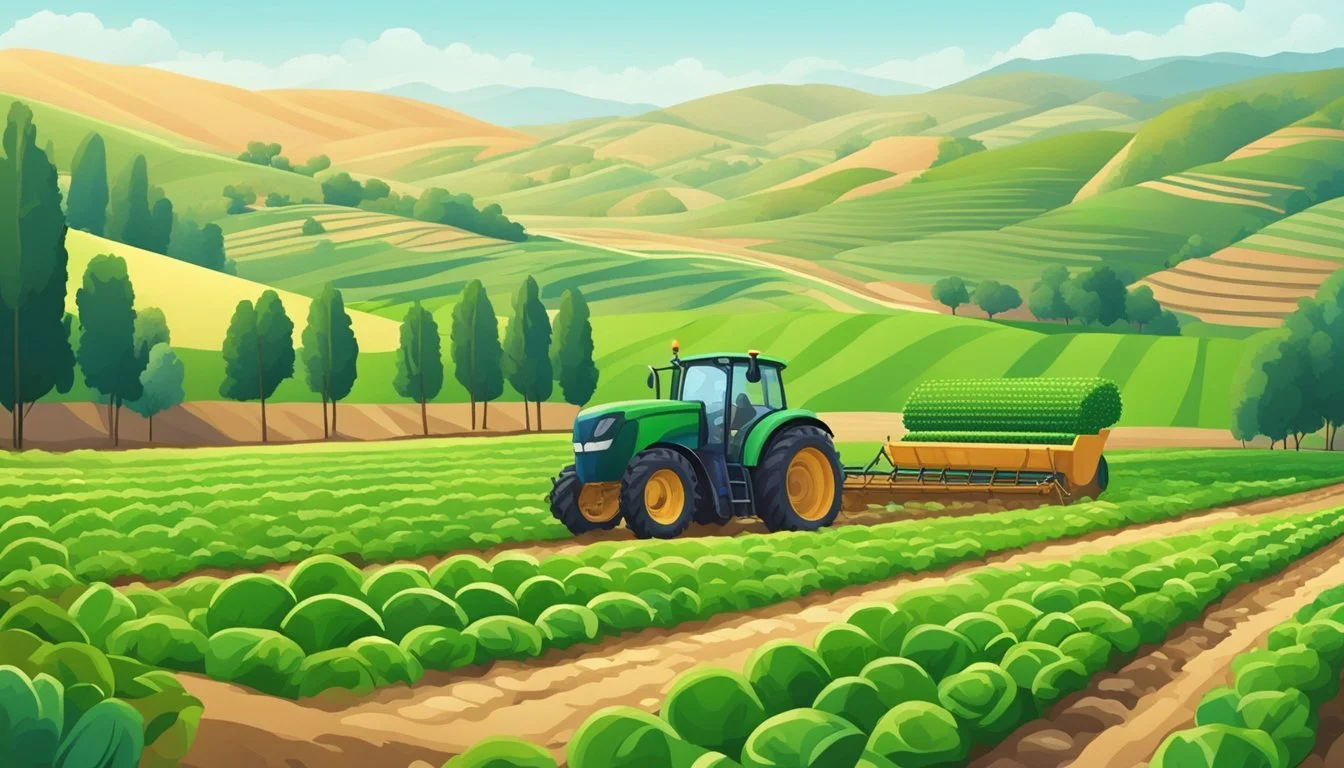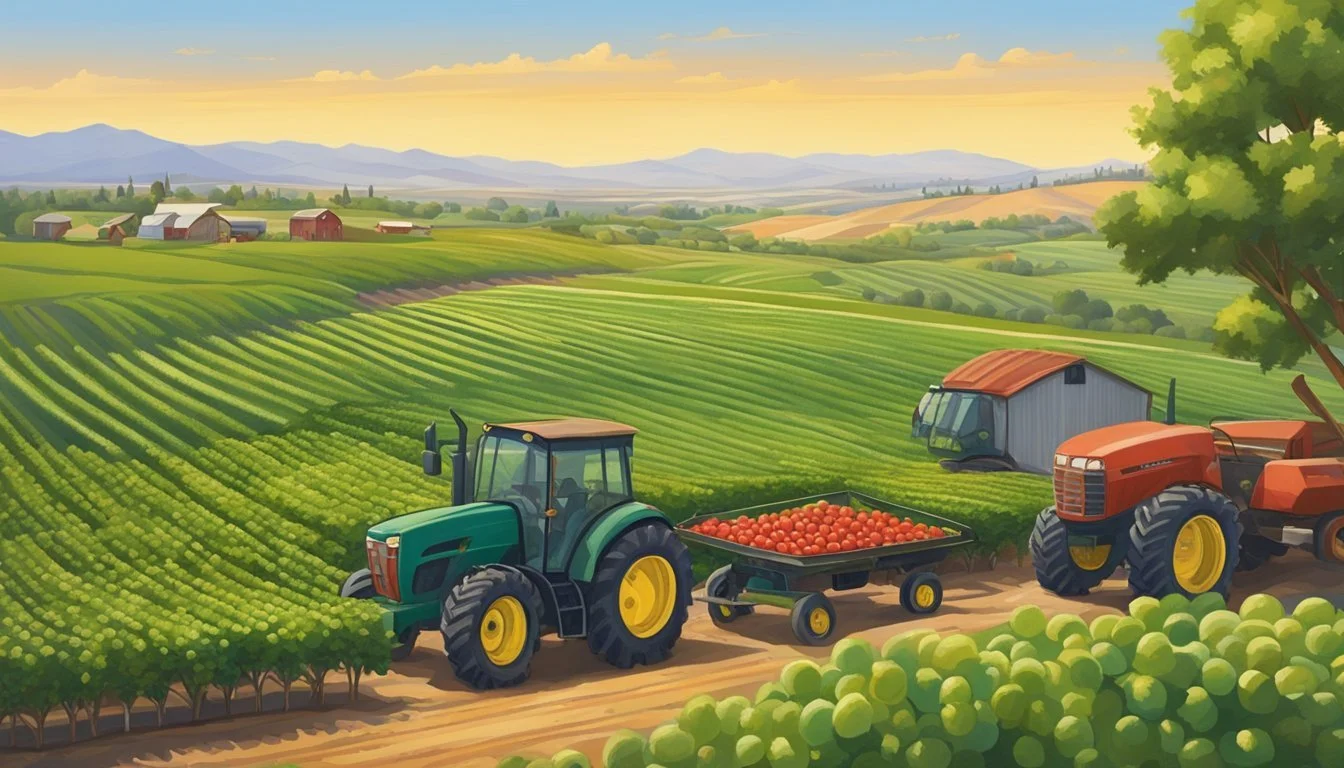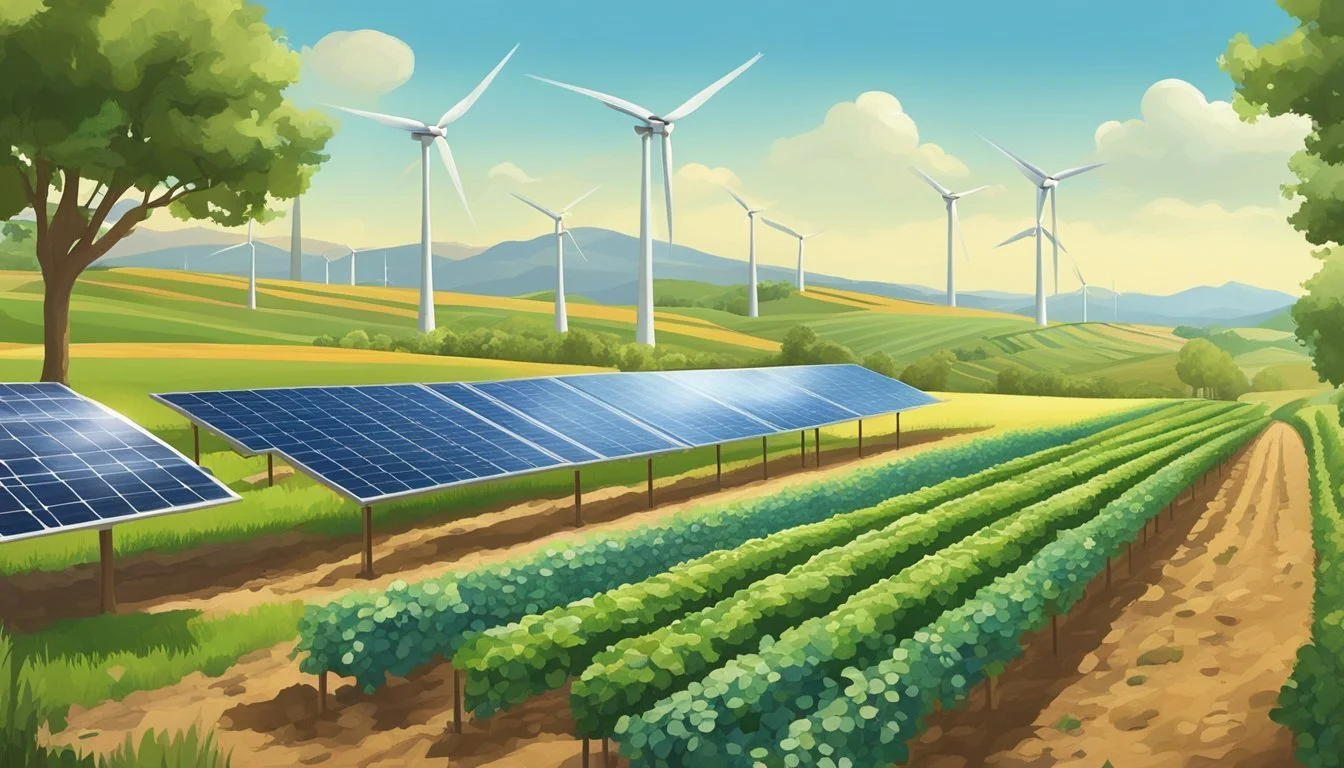Farming Communities in California
Sustainable Practices and Economic Impact
Nestled throughout California are charming farming communities that offer a refreshing escape from the urban sprawl. These towns provide a glimpse into California's rich agricultural heritage, making them perfect spots for anyone interested in rural tourism. Places like Solvang, Mt. Shasta City, Ojai, Julian, Ferndale, and the famous Tehama Trail present unique cultural and agricultural experiences that captivate visitors.
The heart of California's agricultural production lies in its Central Valley, stretching 450 miles from Bakersfield to Redding. This area is divided into the Sacramento Valley in the north and the San Joaquin Valley in the south. Madera and Fresno counties are significant contributors to this region’s agricultural output, known for their expansive farmlands and robust farming activities.
Beyond the Central Valley, other notable areas like Yolo County Farm Trail and Marin County showcase diverse farming practices, from dairy farms like Harley Farms Goat Dairy in Pescadero to organic produce farms. These communities not only highlight the importance of agriculture in California but also emphasize the local flavors and traditions that define the state's rural landscape.
Historical Overview of California Farming
California's agricultural landscape has evolved significantly from the 19th century to the present day, driven by technological advancements and the tireless efforts of diverse farmworkers. Central and San Joaquin Valleys are key regions in this development.
Development of Agriculture in the Golden State
During the Gold Rush in the mid-1800s, an influx of settlers transformed California’s agricultural potential. Central Valley, particularly the San Joaquin Valley, became pivotal areas for farming due to their fertile soil and suitable climate. Irrigation systems were introduced between 1869 and 1889, resulting in a notable increase in irrigated land. By 1929, nearly 16 percent of farmland was irrigated.
In the early 20th century, the Central Coast and Southern California also saw significant agricultural growth. Various crops, including fruits, vegetables, and nuts, flourished due to these regions' unique microclimates. Innovations in irrigation and farming techniques helped maximize yields and efficiency, establishing California as a leading agricultural state.
The Role of Farmworkers in California's Farming History
Farmworkers played a crucial role in California’s agricultural boom. Initially, many workers were Native Californians, whose land and resources were often taken through force and coercion. In the early 1900s, waves of immigrants from Asia, Mexico, and the Dust Bowl areas joined the workforce.
These laborers faced harsh conditions, low wages, and minimal legal protections. Despite these challenges, their contributions were essential, particularly in labor-intensive crops like grapes, citrus fruits, and strawberries. Farmworkers' ongoing struggles led to important labor reforms and union movements, significantly shaping the conditions and rights of the agricultural labor force today.
Geographic and Climatic Factors
California's diverse geography, including the Central Valley, San Joaquin Valley, and various mountain ranges, creates unique climatic conditions that significantly impact farming communities. Rising temperatures and prolonged droughts due to climate change also pose challenges for water resource management and crop sustainability.
Valleys, Mountains, and Coastal Influences
The Central Valley and San Joaquin Valley are major agricultural hubs. These valleys benefit from fertile soils and a Mediterranean climate, ideal for growing a wide range of crops. The Sacramento and San Joaquin Rivers provide essential irrigation, feeding an array of farms.
Surrounding mountain ranges, such as the Coast Range and the Cascade Range, also play a crucial role. They influence weather patterns, contribute to natural reservoirs through snowmelt, and create microclimates. Coastal influences from the Pacific Ocean help moderate temperatures, benefiting certain crops like grapes and strawberries.
Climate Change Effects on Farming Practices
Climate change is altering weather patterns, leading to higher temperatures and unpredictable weather events. This shift impacts crop yields and growing seasons. Heat stress on plants is becoming more frequent, reducing productivity and quality.
Farmers are adapting by integrating climate-smart practices. These include shifting planting dates, utilizing shade netting, and investing in heat-tolerant crop varieties. Such adaptations are crucial to maintaining production levels and quality in a warming climate.
Water Scarcity and Drought Impacts
Water scarcity is a critical issue for California agriculture. The state frequently experiences prolonged droughts, which strain water resources. Reduced snowpack in the mountains, particularly the Sierra Nevada, diminishes the natural water supply during critical growing periods.
Farmers rely heavily on groundwater for irrigation. Over-extraction of groundwater leads to depletion and land subsidence, further complicating water management. Efficient irrigation technologies, such as drip and micro-sprinklers, are being implemented to conserve water and ensure sustainable usage.
Summary of Key Factors:
Valleys and Mountains: Influence climate and water availability.
Climate Change: Increases temperatures, alters growing seasons.
Water Scarcity: Drought and reduced snowpack challenge water management.
By understanding and addressing these geographic and climatic factors, California's farming communities continue to innovate and adapt.
Major Crops and Production
California's diverse climate and rich soil make it a powerhouse of agricultural production. This section covers two significant aspects: the Central Valley's extensive production of fruits, nuts, and vegetables and the renowned viticulture of Wine Country.
Fruits, Nuts, and Vegetables: The Central Valley's Bounty
The Central Valley, spanning roughly 450 miles, is the backbone of California's agriculture.
In Fresno County, the production of raisins stands out. Grapes are dried into raisins during the hot, dry summers, a method honed over generations.
Tomatoes are extensively cultivated, covering approximately 230,000 acres. They play a vital role in both fresh markets and processed goods.
Nuts, particularly almonds and pistachios, are also significant. Almonds alone generate substantial revenue.
Citrus fruits, including oranges and lemons, thrive here, benefiting from the valley's favorable climate and water supply.
Wine Country: Grapes and Viticulture
California's Wine Country is synonymous with high-quality wine production.
Napa Valley, located north of San Francisco, is famous for its vineyards. Grapes grown here are often transformed into world-class wines, including Cabernet Sauvignon and Chardonnay.
Sonoma County also contributes significantly, showcasing diversity in grape varieties and wine styles.
The coastal regions, with their unique microclimates, offer ideal growing conditions for Pinot Noir and Chardonnay.
Viticulture in California, bolstered by innovation and tradition, remains a crucial part of the state's agricultural identity.
Sustainable Farming Practices
Sustainable farming in California involves optimizing resource use, enhancing soil health, and employing water-saving techniques. These practices are essential to maintain productivity while promoting environmental conservation.
Organic Farming and Crop Rotation
Organic farming in California emphasizes the use of natural fertilizers and pest control methods. This approach reduces the reliance on synthetic pesticides and chemical fertilizers. Instead, farmers rely on compost, manure, and other organic fertilizers to enrich the soil.
Crop rotation is another critical practice. By rotating crops, farmers prevent the depletion of soil nutrients and break pest and disease cycles. For instance, legumes might be planted after cereal crops to restore nitrogen to the soil. This diversified planting strategy enhances soil fertility and yields.
Soil Conservation and Management
Maintaining soil health is crucial for sustainable farming. Conservation tillage methods, such as no-till or reduced-till farming, help preserve soil structure and moisture levels. This reduces erosion and boosts the soil's organic matter content.
Cover crops, like clover or rye, are also planted to protect the soil between main crops. These crops prevent erosion, suppress weeds, and enhance soil organic matter. Furthermore, mulching with plant residues or compost helps address moisture retention and temperature regulation in the soil.
Water Management and Conservation
Efficient water use is vital in California's dry climate. Advanced irrigation systems like drip irrigation deliver water directly to plant roots, minimizing waste. This method results in significant water savings compared to traditional techniques.
Rainwater harvesting is another strategy. Farmers build catchment systems to collect and store rainwater for future use. Additionally, soil moisture sensors guide irrigation schedules, ensuring plants receive optimal water amounts without excess.
Conserving water not only supports sustainable farming but also addresses broader environmental issues by reducing strain on water resources. This careful management contributes to the resilience and longevity of farming operations in California.
Agricultural Challenges
Farming communities in California face multiple challenges that threaten their sustainability. These include water resource issues, an increasing need for pest and disease control, and market fluctuations that affect economic stability.
Water Resource Issues and Groundwater Usage
California's farming depends heavily on water, with significant reliance on both surface and groundwater supplies. Droughts, increasingly common due to climate change, reduce water availability. Farmers must contend with strict regulations, such as the Sustainable Groundwater Management Act (SGMA), which aims to balance water withdrawals with replenishment.
During droughts, groundwater becomes a critical resource, but over-extraction depletes aquifers, lowering water levels. Fires compound these issues by destroying vegetation that retains soil moisture, leading to more runoff and less groundwater recharge.
Pests, Diseases, and Pesticide Use
The state’s diverse agriculture makes it prone to various pests and diseases. These threats can devastate crops, reducing yields and impacting profitability. Farmers often depend on pesticides to control these risks, but pesticide use brings its own challenges, including environmental concerns and pest resistance.
Sustainable pest management practices are increasingly important. Integrated Pest Management (IPM) strategies combine biological controls with traditional methods, aiming to reduce pesticide use. While effective, these practices require significant knowledge and careful monitoring.
Market Challenges and Economic Viability
California farmers face volatile markets influenced by domestic and international factors. Price fluctuations for key crops, tariffs, and trade policies can greatly affect farm income. Small farms, in particular, struggle with economic viability due to lower economies of scale.
With high costs of labor and compliance with environmental regulations, maintaining profitability is demanding. Farmers seek innovative practices and diversification to improve resilience. Community-supported agriculture (CSA) models and direct-to-consumer sales offer alternative revenue streams that can help buffer against market instability.
The Economic Impact of Farming
Farming in California significantly influences both the local and the state economy. This impact can be quantified through contributions to economic output and employment opportunities for diverse populations.
Contribution to Local and State Economy
California's agricultural sector is pivotal to the state’s economy, generating substantial revenues. In 2020, agricultural cash receipts totaled nearly $55 billion, accounting for over 12% of the total U.S. agricultural receipts. This significant contribution underscores the sector's role in economic stability and growth.
Citrus and Dairy Production also play crucial roles. California leads the U.S. in both dairy and wine production, further enhancing its economic footprint. The state's fruit and nut industries yield high economic returns, driven by optimal growing conditions.
Additionally, agricultural activities stimulate related industries. The value chain includes production, processing, distribution, and retail, creating a ripple effect that benefits multiple sectors.
Employment and Labor Markets
Agriculture in California supports a vast labor market. Thousands of farmworkers depend on this sector for employment, providing both full-time and seasonal jobs. The industry's labor requirements span from planting and harvesting to processing and distribution.
Job statistics indicate substantial employment figures. For example, the 2021 drought impacted approximately 8,750 full- and part-time agricultural jobs and resulted in significant economic losses. Despite challenges, the sector remains a pivotal employer.
Furthermore, agricultural employment drives demographic diversity. Farmworkers often include migrant labor, contributing to the multicultural fabric of California's communities. This range of employment opportunities ensures sustained productivity and helps maintain stable workforce numbers, essential for ongoing economic success.
Community and Cultural Aspects
Farming communities in California exhibit rich traditions and vibrant cultural practices. These include thriving farmers markets, agricultural festivals, and the deep-rooted role of farming in local customs and heritage.
Farmers Markets and Direct-to-Consumer Sales
Farmers markets play an integral role in California's farming communities, fostering direct connections between producers and consumers. The Ferry Plaza Farmers Market in San Francisco is a prime example where urbanites can buy fresh produce directly from farmers.
In rural communities like those in Marin, local markets also offer opportunities to purchase homemade goods and artisanal products. This direct interaction supports small-scale farmers and ensures that consumers receive fresh, high-quality produce. The emphasis on fresh and local ingredients enhances the flavor and nutritional value of food, creating a robust and sustainable food system.
Agricultural Festivals and Events
Agricultural festivals are pivotal in celebrating and preserving the farming culture in California. Events such as the California State Fair and the Gilroy Garlic Festival draw visitors from across the state and beyond.
These festivals showcase local produce, artisan crafts, livestock, and traditional culinary practices, providing a platform for farmers to educate the public about their work. The festivals serve as a communal gathering, strengthening bonds within the rural communities and highlighting the importance of agriculture in the state. Additionally, these events boost local economies through tourism and promote California’s agricultural heritage.
Role of Farming in Local Traditions and Heritage
Farming has significantly shaped local traditions and heritage in California. Many rural communities maintain long-standing practices that have been passed down through generations. In areas like the Central Valley and the Sonoma Wine Region, farming methods and celebratory customs related to harvests are deeply ingrained in the community's way of life.
These traditions often include unique festivals, fairs, and community gatherings that honor the agricultural cycles and highlight the value of farming in their culture. This connection to agriculture is not only a source of pride but also a critical aspect of the community's identity, ensuring that the rich heritage continues to thrive.
Farming Innovations and Technology
California's agricultural sector is experiencing significant growth driven by innovations in technology. These advancements are transforming farming practices, notably through precision agriculture and enhanced educational resources.
Precision Agriculture and Technological Advancements
Advances in precision agriculture are significantly improving farm productivity in California. Technologies such as GPS-guided tractors and drone surveillance allow for more accurate planting, watering, and harvesting.
Farmers are utilizing data analytics to monitor crop health and soil conditions in real-time. This reduces waste and optimizes resource use.
Ag-tech startups in California saw $4.9 billion in venture capital investment last year. Many of these companies are developing tools that help farmers make data-driven decisions. An example is Winters Farming which collaborates with tech firms to improve operational efficiency.
Interactive Resources and Educational Outreach
Educational outreach is another major component of farming innovation in California. Interactive resources such as farm maps and apps provide farmers with critical information on crop management.
Organizations like the Community Alliance with Family Farmers (CAFF) host events and expos to showcase new technologies. These events offer farmers opportunities to learn about the latest tools and techniques.
The Small Farm Innovation Challenge and related conferences are platforms for farmers to see demonstrations and interact with tech vendors. These interactive sessions ensure that even small farms can adopt new technologies to remain competitive.
Environmental Considerations
California's farming communities face numerous environmental challenges that impact biodiversity, ecosystems, and pollution control. Key factors include the role of agriculture in both harming and benefiting the environment.
Farming's Impact on Biodiversity and Ecosystems
Farming practices in California significantly affect biodiversity and ecosystems. Agricultural expansion often leads to habitat loss, which threatens local wildlife. The San Joaquin Valley, known for its extensive farming, struggles with a decrease in native species due to land conversion.
Intensive farming can lead to soil erosion, reducing soil fertility and impacting plant life. Sustainable agriculture practices, such as crop rotation and cover cropping, help maintain soil health and support biodiversity. These methods enhance wildlife habitats and encourage beneficial insect populations, aiding natural pest control.
Pollution Control and Chemical Management
Pollution from agriculture, such as chemical runoff, endangers water bodies and air quality. Use of pesticides and fertilizers contributes to harmful algal blooms and contaminates drinking water sources. Disadvantaged communities often face higher exposure to agricultural pollutants, leading to health issues like asthma.
Efforts to reduce chemical use include integrated pest management (IPM) and organic farming. IPM focuses on using biological controls and reducing synthetic chemical reliance. Regulations and incentives for adopting cleaner practices are essential for protecting ecosystems and human health.
Regulation and Policy
California's farming communities are significantly impacted by both state and federal laws. Understanding these regulations is crucial for maintaining sustainable agricultural practices and ensuring compliance with legal standards.
State and Federal Laws Impacting Farming
California's agriculture is shaped by a combination of state regulations and federal policies. The U.S. Department of Agriculture (USDA) plays a vital role, providing guidelines and funding through programs under the Farm Bill. This legislation supports various aspects such as crop insurance, conservation, and disaster assistance, which are essential to farmers.
At the state level, the California Department of Food and Agriculture (CDFA) oversees many regulations. The Farmer Equity Act aims to address racial disparities in farming communities, promoting inclusivity and support for minority farmers. Urban agriculture policies, supported by local governments, encourage sustainable farming practices and food security, especially in metropolitan areas.
Legislation also governs pest control, organic certification, and food safety. To ensure compliance, farmers must adhere to rigorous standards, often necessitating regular inspections and adherence to best practices.
Water Rights and the Sustainable Groundwater Management Act
Water rights are critical to California's agricultural sustainability, given the state's frequent droughts. The Sustainable Groundwater Management Act (SGMA), passed in 2014, mandates the creation and implementation of groundwater sustainability plans by local agencies. These plans aim to balance groundwater withdrawal with replenishment to prevent long-term depletion.
Farmers must navigate complex water rights regulations, often involving allocations based on seniority of claims and regional water availability. Strategic water management is vital, requiring coordination between local governments and farming communities to effectively share and conserve water resources.
SGMA emphasizes transparent and participatory management, encouraging communities to engage in the planning process. Compliance with these regulations ensures that groundwater remains a viable resource for future agricultural needs.
Looking to the Future
The future of California's farming communities involves nurturing the next generation of farmers, adapting crops for emerging markets, and striving for carbon neutrality.
The Next Generations of Farmers
Young farmers are essential to sustain California's agricultural legacy. Incentives and educational programs are crucial for their success.
Organizations offer grants and training to new farmers, ensuring they have the resources to thrive.
Many young farmers bring innovative approaches, such as regenerative agriculture and advanced technology, significantly boosting productivity.
Emerging Markets and Crop Adaptations
Adapting to climate change involves exploring new markets and crop varieties.
Crops resistant to heat and drought are being developed and tested. For example, pistachios and almonds continue to be vital, but new crops like quinoa and millet are gaining ground.
Farmers are experimenting with diversification, ensuring both sustainability and profitability.
Advancements Towards Carbon Neutrality
Sustainable practices are becoming more prevalent in California's farming. Carbon farming techniques, like cover cropping and no-till practices, reduce greenhouse gas emissions.
State policies and grant programs support these eco-friendly methods. Solar and wind energy are increasingly integrated into farm operations, further cutting carbon footprints.
Farmers who adopt these methods not only contribute to a healthier environment but also benefit economically through incentives and enhanced yields.








